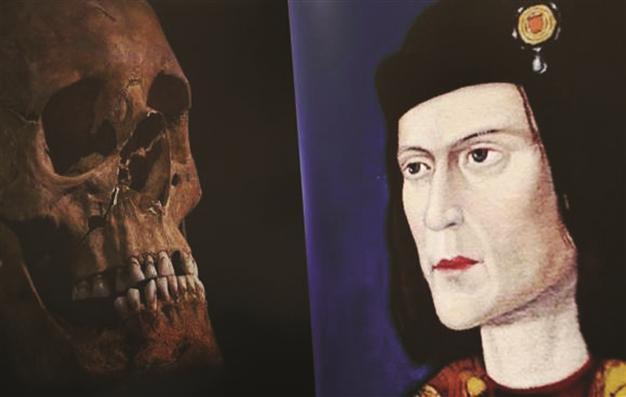Scientists map genome of English king Richard III
LONDON - Reuters

A television image of King Richard III’s skull is seen next to a portrait of him.
A year after they revealed a twisted skeleton found under a car park as the mortal remains of King Richard III, scientists in Britain plan to grind samples of his ancient bones and use them to map his genome.
The project, which may alter perceptions of the last king of England to die in battle more than 500 years ago, aims to learn about Richard’s ancestry and health, and provide a genetic archive for historians, researchers and the public.
In one of the most significant archaeological finds of recent English history, the skeleton - with a cleaved skull and curved spine - was dug up from under a car park in the English city of Leicester and unveiled last year as that of the king slain as he fought to keep his crown at the Battle of Bosworth Field in 1485. His death ended the Plantagenet dynasty and ushered in the Tudors under Henry VII.
After taking a small sample of bone from the skeleton, Turi King of the University of Leicester genetics department will grind it to a powder, extract DNA and seek to piece together as much as possible of Richard’s genetic code.
“It’s a bit like a jigsaw puzzle. You tile it together to get as much of the genome as possible,” King told reporters at a briefing about the project on Feb. 11.
Richard III’s place in history is contested. William Shakespeare cast him as a hunch-backed tyrant who murdered two princes in the Tower of London and died in battle crying out: “A horse! A horse! My kingdom for a horse!” Richard’s supporters argue his reputation was tarnished deliberately to cement Tudor rule.
Richard III’s remains and any samples taken from them are to be re-interred at some point - although the issue of when and where is now a legal dispute.
